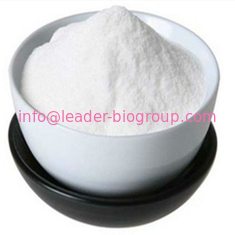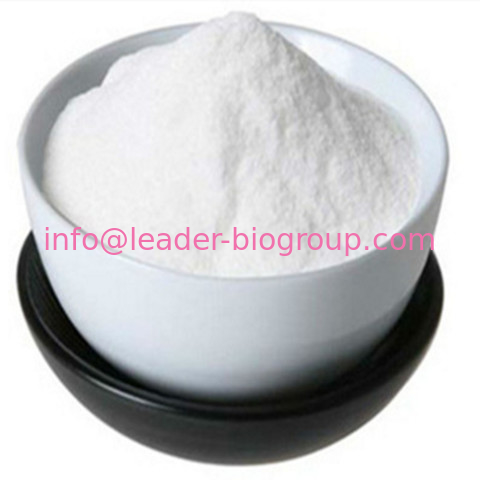| Description |
As an organic compound, Cinnamyl alcohol has a very distinct sweet, spicy, hyacinth odour that is found in resins, balsams and cinnamon leaves. It is used commonly in the fragrance industry due to its distinctive odour, which can be applied as a deodorant, fragrance and additive in cosmetic products and in the formulation of bath products, body and hand products, such as soaps, toothpaste, deodorants, etc. Besides, it also finds application as a food additive in chewing gum, bakery products, candy and soft drinks. Naturally, Cinnamyl alcohol is occurrent only in small amount, thus its industrial demand is usually fulfilled by chemical synthesis starting from the reduction of cinnamaldehyde.
Cinnamyl alcohol has been found to have a sensitising effect on some particular people, thus it is also considered as a Standardized Chemical Allergen. The physiologic effect of cinnamyl alcohol is caused by the Increased Histamine Release and cell-mediated Immunity. |
| Uses |
Cinnamyl alcohol is valuable in perfumery for its odor and fixative properties. It is a component of many flower compositions (lilac, hyacinth, and lily of the valley) and is a starting material for cinnamyl esters, several of which are valuable fragrance materials. In flavor compositions, the alcohol is used for cinnamon notes and for rounding off fruit aromas. |
| Preparation |
Cinnamyl alcohol is prepared on an industrial scale by reduction of cinnamaldehyde. Three methods are particularly useful:
1) In the Meerwein–Ponndorf reduction, cinnamaldehyde is reduced to cinnamic alcohol (yield about 85%) with isopropyl or benzyl alcohol in the presence of the corresponding aluminum alcoholate.
2) A 95% yield of Cinnamyl alcohol is obtained by selective hydrogenation of the carbonyl group in cinnamaldehydewith, for example, an osmium–carbon catalyst.
3) High yields of Cinnamyl alcohol can be obtained by reduction of cinnamaldehyde with alkali borohydrides. Formation of dihydrocinnamic alcohol is thus avoided. |
| References |
https://en.wikipedia.org/wiki/Cinnamyl_alcohol
http://www.huidziekten.nl/allergie/stoffen/cinnamic-alcohol.htm
https://www.ulprospector.com/en/na/Food/Detail/13286/411638/Cinnamic-Alcohol
http://www.cosmeticsinfo.org/ingredient/cinnamyl-alcohol-0
https://pubchem.ncbi.nlm.nih.gov/compound/cinnamyl_alcohol#section=Top
http://www.somaiya.com/products/chemicals-pipeline/cinnamic-alcohol-1 |
| Description |
Occupational cases of contact dermatitis were reported in the perfurne industry. Patch tests can also be positive in food handlers. Cinnamic alcohol is contained in the "fragrance mix". |
| Chemical Properties |
Cinnamyl alcohol can exist in (Z)-[4510-34-3] and (E)-[4407-36-7] forms. Although both isomers occur in nature, the (E)-isomer is far more abundant and is present, for example, in styrax oil. (E)-Cinnamyl alcohol is a colorless, crystalline solid with a hyacinth-like balsamic odor.
Cinnamyl alcohol can be dehydrogenated to give cinnamaldehyde and oxidized to give cinnamic acid. Hydrogenation yields 3-phenylpropanol and/or 3-cyclohexylpropanol. Reaction with carboxylic acids or carboxylic acid derivatives results in the formation of cinnamyl esters, some of which are used as fragrance materials. |
| Chemical Properties |
Cinnamyl alcohol has a pleasant, floral odor and bitter taste. |
| Occurrence |
Occurring as an ester or in the free state in hyacinth, Aristolochia clematis, Xanthorrhoea hastilis and in the essence of daffodil flowers. It is also reported found in guava fruit and peel, lemon peel oil, cassia leaf, Bourbon vanilla and cinnamon bark, leaf and root. |
| Uses |
Cinnamic alcohol is a component in perfumed cosmetic products and deodorants; some perfumery uses (cinnamon; daffodil; hyacinth; jasmine); natural occurrence (cinnamon). |
| Uses |
cinnamyl alcohol is naturally occurring in cinnamon bark, it can also be synthetically manufactured. It is used in cosmetics as a fragrance or flavoring agent.In perfumery; as deodorant in 12.5% solution in glycerol. |
| Uses |
Cinnamyl alcohol was used to study the alkylation of 2,4-di-tert-butylphenol by cinnamyl alcohol using aluminum-containing mesoporous ethane-silica catalyst. It was used to study gold nanoparticles supported on titanium dioxide catalysed oxidative coupling of alcohols and amines to form the corresponding imines. |
| Definition |
ChEBI: A primary alcohol comprising an allyl core with a hydroxy substituent at the 1-position and a phenyl substituent at the 3-position (geometry of the C2C bond unspecified). |
| Preparation |
By reduction of cinnamic aldehyde. |
| Aroma threshold values |
Detection: 1 ppm; cis- form, 81 ppb; trans- form, 2.8 ppm |
| Taste threshold values |
Taste characteristics at 20 ppm: green, floral, spicy and honey with a fermented yeasty nuance. |
| Synthesis Reference(s) |
Chemistry Letters, 5, p. 581, 1976
The Journal of Organic Chemistry, 59, p. 6378, 1994 DOI: 10.1021/jo00100a046
Tetrahedron Letters, 34, p. 257, 1993 DOI: 10.1016/S0040-4039(00)60561-0 |
| Contact allergens |
Cinnamyl alcohol occurs (in esterified form) in storax, Myroxylon pereirae, cinnamon leaves, and hyacinth oil. It is obtained by the alkaline hydrolysis of storax and prepared synthetically by reducing cinnamal diacetate with iron filings and acetic acid, and from cinnamaldehyde by Meerwein-Ponndorf reduction with aluminum isopropoxide. Cinnamyl alcohol is contained in the “fragrance mix.” As a fragrance allergen, it has to be mentioned by name in cosmetics within the EU. Occupational cases of contact dermatitis were reported in perfume industry. Patch tests can be positive in food handlers. |
| Chemical Synthesis |
Obtained originally by saponification of extraction from storax; synthetically, by reduction of cinnamaldehyde with sodium or potassium hydroxide. |
| Purification Methods |
Crystallise the alcohol from diethyl r/pentane. [Beilstein 6 I 281.] |

